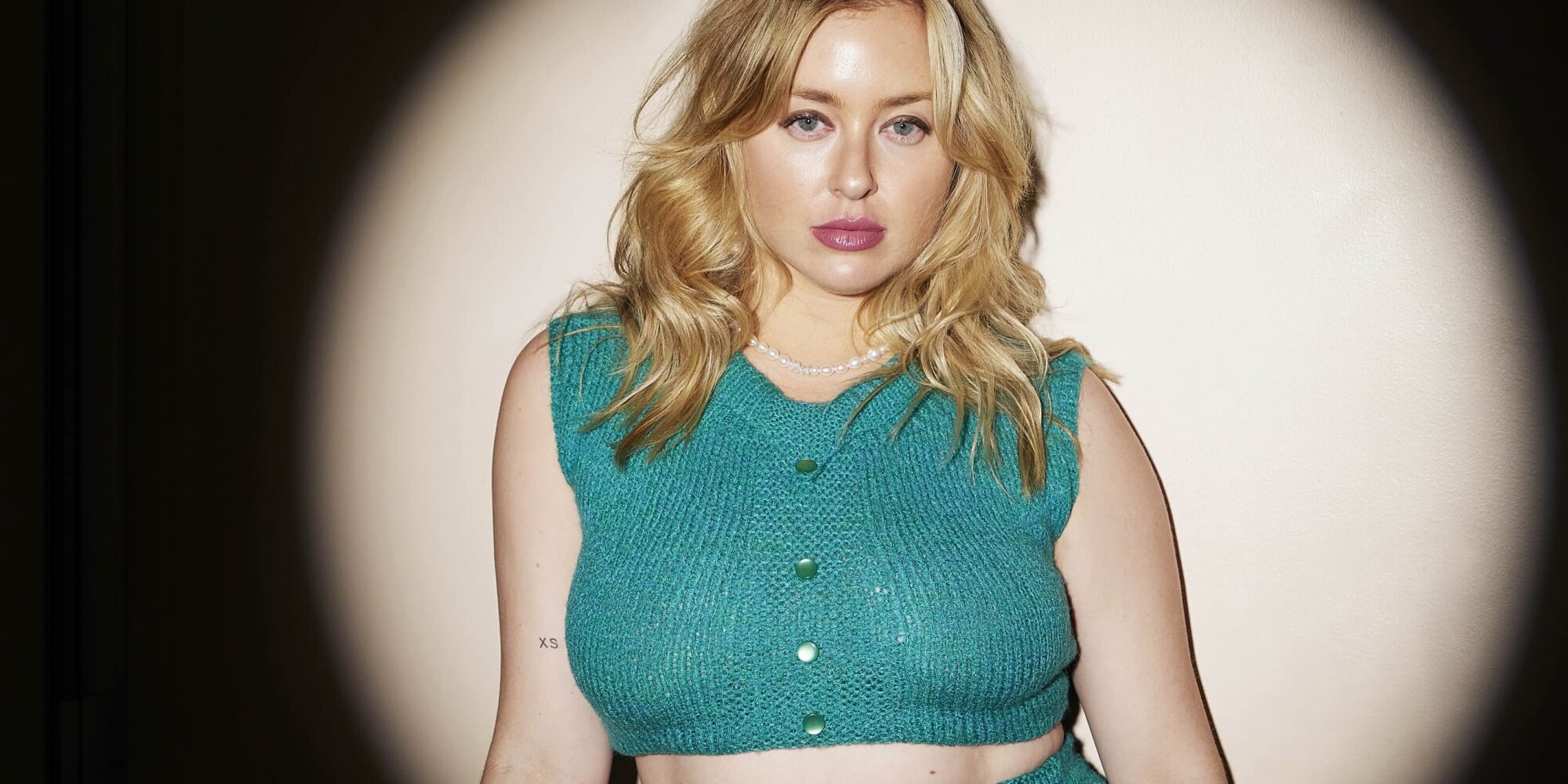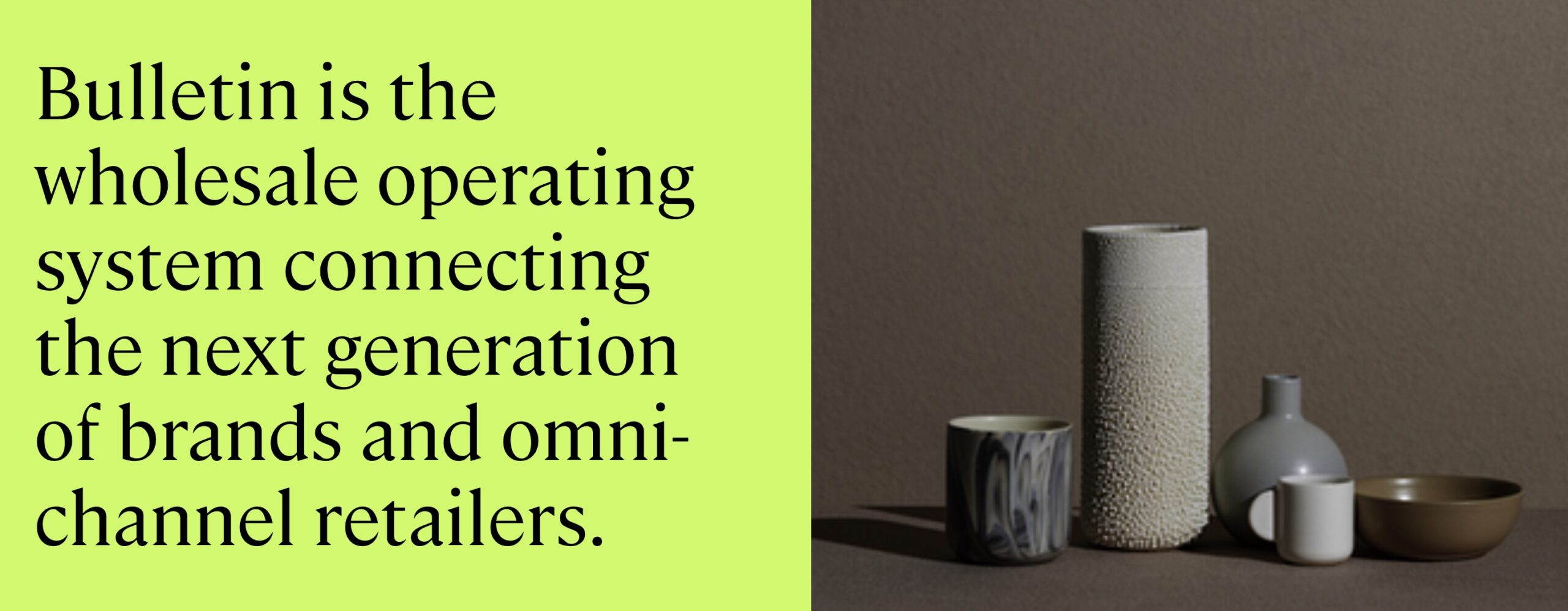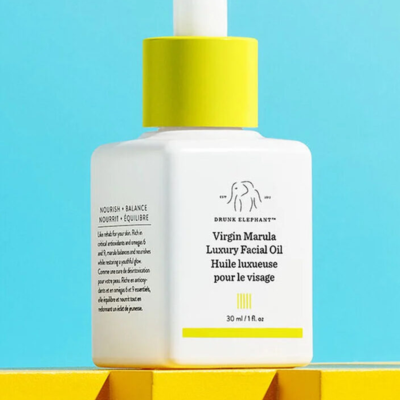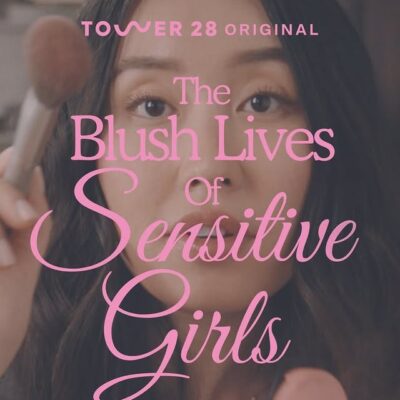
Bulletin Co-Founder Ali Kriegsman On Why Founder-Led Brands Are The Future—And Not All Founders Will Like It
At Bulletin, Ali Kriegsman and Alana Branston built an unexpected empire. After a series of pivots—it went from a newsletter spotlighting cool indie brands they started in 2015 while working at content marketer Contently to a membership fee-based retail concept two years later and then became digital wholesale marketplace when the pandemic took hold—they sold it in 2022 to event organizer Emerald Holding Inc. for roughly $10 million.
Now, Kriegsman, author of the book, “How To Build A Goddamn Empire,” is helping other founders build expected empires. Following a brief stint as CMO and co-founder at Scent Lab, a candle business that shuttered in January, she’s coaching entrepreneurs and consulting early- to mid-stage consumer goods brands on web development, positioning and influencer programs, which she’s running for four, including Moonbow and Cayla Gray. She’s also busy writing her Substack, “New Motives,” and preparing to release a novel on Sept. 17.
A self-described “ruthless salesperson,” Kriegsman doesn’t mince words about just how ruthless business can be for emerging consumer brands today. “I’m not going to sugarcoat it. The investment landscape is very challenging. The marketing landscape is very challenging,” she says. “The consumer is very overwhelmed, and there is so much noise. I think it takes a lot more now to pry the consumer away from their tried-and-trues.”
Beauty Independent caught up with Kriegsman to discuss the steps of erecting an influencer program, the new female entrepreneur ideal embodied by Poppi co-founder Allison Ellsworth, the hidden phenomenon of nepo founders and the necessity for founders to be front-facing advocates for their brands.
Do you believe the influencer ecosystem is popping?
I do think that the influencer landscape as we’ve known it for the last 10 years is popping. To give some context, when I started my career, I was at Condé Nast on the marketing solutions team. This was right as style and beauty blogs were big, and Instagram had just started becoming big. Brands were just starting to shell out tens of thousands to hundreds of thousands of dollars to influencers like Danielle Bernstein to market their products.
Up until the last few years, brands had a sense that, the bigger the audience, the more eyeballs, the better the investment, the higher the conversion. I don’t think that’s the case anymore. The tides have turned in the last two to three years because of the rise of platforms like ShopMy and Substack.
Micro-influencers have higher engagement. From my research, it ranges from 7% to 20% for an influencer that has 10,000 to 100,000 followers versus macro-influencers having around 5% average engagement if they have over 100,000 followers.
Micro-influencers have closer connections to their more niche audiences, and, because of platforms like ShopMy, they’re able to leverage their relationships and get commissions on them. It doesn’t matter that the micro-influencer has only 10,000 followers because the value of those eyeballs is so much more meaningful than a massive influencer with 300,000 followers.
We’re seeing a massive power shift away from traditional influencers where they haven’t really niched down. Brands are significantly more interested in investing in micro-influencers, micro-journalists or micro-curators through platforms like ShopMy or Substack where they can get their product placed with someone that has a smaller, but more loyal and trusting audience, and that person can benefit from including their product through affiliate commissions.

If you’re a nascent brand today, what would you do to build your influencer program?
The first thing is understanding that gifting is an investment, and it’s an investment that you will see return on in different ways. There’s a few KPIs with an influencer program. One KPI is brand awareness and buzz, basically generating site traffic, building up followers and visits to your social handles, generating engagement around your handle. You may be working with creators that aren’t on ShopMy generating commissions, more of your everyday person that’s excited to receive product.
The second pillar is brand sales, where you are partnering with influencers because they’re including you in their ShopMy roundups and links in their Instagram handle. If they’re on Substack, you may be getting plugged into their skincare or makeup recommendations, and the creator is mentioning you because they’re going to get sales. It’s important that you’re on a platform like ShopMy because influencers on those platforms want to work with brands where there’s an upside for them.
The issue is there’s a barrier to entry because ShopMy has rules where you have to have a certain amount of organic traction for them to accept you. They say they need to see creators organically linking you into before they consider having you on ShopMy. What that means is you need to focus on pillar one for a while and build up brand awareness.
When these influencers that are monetizing their influence don’t know who you are, you reach out and say, “Hey, we want to send you a sample. We’re not on ShopMy yet, but we’d be eager to work with influencers organically linking us. If you love the product, we’d really appreciate if you can link us in your shop, we should be able to offer commission soon.”
I always think about sequencing. You really need to invest in brand awareness first, where you’re working with people who are doing it because the love it and care about the mission and values of the brand, and they’re aligned with what your customer looks like. Then, once you do have a certain velocity of that, you build awareness and hop over to working with influencers that will get a commission. They’re more primed to say yes because you’ve done the brand awareness building. Then, after that, maybe you level up to pay for a cool partnership where you’re shelling out $10,000 for an aligned influencer with 400,000 followers.
Early on at Bulletin, you had political messages. Should brands be political today?
I don’t think there’s a yes or no answer to this. It is completely up to the founder. What I will say is that, at the time of Bulletin’s retail store permutation, it felt right for me and Alana to donate proceeds from our sales to Planned Parenthood and invest in the political message as two female founders.
We had just graduated from Y Combinator, we were one of only two fully female-founded businesses in our cohort, and Trump had just been elected and that created a perfect storm for us to want to act. IT felt true and organic at the time. If other founders feel a genuine connection to a mission or a political message, and they can do the delicate and difficult job of running a business while carrying a political message, then they should.
That said, it is not easy. The two are often in conflict, and we’ve seen that it can create a recipe for disaster for businesses, especially female-founded businesses because capitalism and political or social good are often inherently at odds with each other.
You entitled a post on your Substack, “How Many Consumer Brands Are Secretly Bankrolled By Mom and Dad?” In it, you write, “The problem is, many people are attempting these fragile, high-cost business models without that safety net, not seeing the same results, comparing themselves to these secret Instagram and Tik Tok Nepo Babies, wondering wtf is wrong with them, and banging their heads against the wall.” Why did you want to write about nepo baby brand founders?
Bulletin was initially bootstrapped. We pulled together our savings, quit our jobs on the fly. I was working at a bar from 6 p.m. to midnight for six months to offset how much money was coming out of my savings. I grew up very privileged, but my family lost all of our money because of my dad’s second kidney failure. He was on dialysis for many years. He then cheated on my mom, and it caused a divorce and a financial downfall from that.
But I went to an Ivy League school. I have the networking benefits of that. I know how to present myself. I knew how to pitch investors. I think my personal value system is one that centers on transparency because it only helps the ecosystem. I don’t like making people that are working very hard to achieve their goals feel bad about themselves.
I don’t like when there’s content or messaging that feeds their negative self-talk. And I can’t explain why I feel that way. I think it’s probably because I grew up in a household that was rife with negative talk, and I want to stop it in its tracks.
I work with clients dealing with their insecurity and this comparison trap that we’re all in. I sometimes have more context because of how long I’ve been in the game, and it frustrates me that people are comparing themselves to other people without having all the data.

This discussion is similar to the discussion about Nepo babies in Hollywood around the advantages that some people are accrued that don’t recognize it or that we don’t come to terms with as a society.
I try to share information so that I can level the playing field. I’m not a gatekeeper. People hide information about their access, resources and what actually happened to get them where they are, then they present themselves as self-made. They create this content that’s very empowering—you can do it, too, just believe in yourself, take the risk.
There are cases like Poppi, for example. Allison had $15,000 to start Poppi and did the damn thing. That’s amazing. She’s someone who went all in who didn’t have those resources, and it worked out, but, with the economy that we’re in, I just think it’s very irresponsible to create content that pushes that messaging when you have a checkbook that allowed you to take that risk. How are you not telling that part of the story?
Do you believe the glamorized version of female entrepreneurship is going away, or where are we heading in terms of how we’re viewing female entrepreneurs?
Allison is a great example of what female entrepreneurship can be and what I hope it looks like in the future. Motherhood was such a core part of her entrepreneurial experience. I want to credit Jasmine Garnsworthy at Female Founder World for double clicking on this and creating a big conversation.
Allison’s nine months pregnant on “Shark Tank.” She has babies in her warehouse. Her children are featured in almost every single clip. The way that she has very openly integrated motherhood within entrepreneurship is a great template that you don’t have to choose between becoming an entrepreneurial billionaire or being a mom. The version of a female entrepreneur we were raised on in the 2010s didn’t feature that prominently.
The second thing is Poppi has faced a good amount of controversy—the vending machine controversy, and there’s been a conversation about the types of influencers they work with around inclusivity. Allison faced those conversations head on with her community. She has set an example for staying in the game. Women are often expected to cower, apologize, disappear for a while.
Her forging forward and not letting the discourse get in her way is important for women to see because it shows that it’s important to listen and react to your community, but it doesn’t mean you have to stop in your tracks. That’s a new model for women to learn from.
The third thing is Allison has clearly had so much fun building Poppi. She is smiling, laughing, dancing. Poppi is such a bright, happy, glorious brand. In my first bout of entrepreneurship, I identified so much with the struggle. I don’t regret that. I was in my 20s and had a very woe-is-me vibe about the whole thing. I love that Allison brought so much levity and joy to her entire experience building Poppi, and I think that that is something other women can look at.
There was a recent The New York Times article about gen Z being exhausted by rapid trend cycles. What do you think about social media trend cycles, and how brand should play in them?
The brands that I work with don’t play in them. There’s been more of a push toward, what is our brand DNA, and why are people coming to us? That’s going to drive the right customers to us and keep them loyal and engaged with the brand on an ongoing basis. And there’s a big shift this year toward, I want people that really reflect my customer to be talking about my brand, featuring it in content organically.
A lot of brands do thrive off plugging into the trend cycle at the right time. Fast fashion brands launch and live by micro-trends. But I think Futurewise, for example, is a good testament to building an entire brand around a micro-trend may not be the right direction to go in.

What should founder hopefuls consider before launching a brand today?
You the founder need to be the brand’s biggest advocate. I think that founder-led brands are the future. I don’t think it matters if the influence comes first and then the brand comes or if you conceptualize the brand and then build your influence as you’re building the brand.
Brands like Parke, Odd Muse and Behave Candy are great examples. Mayssa [Chehata, founder of Behave Candy,] built up her founder persona on TikTok concurrently with building her brand. Dianna Cohen from Crown Affair is doing the same thing.
It’s much harder to convert consumers without putting yourself out there, telling your story and getting them to believe in you and understand why you built the brand. Getting them bought into your energy is such a critical part of the funnel.
Not every founder wants to be front facing on social media, and some try hard on social media and never gain traction. What do you tell them?
What I will validate is it’s messed up. I’m about to go on a content creation blitz because I have to exponentially grow my audience to sell my book, and I’m irritated by it. I’m a very extroverted person who’s very comfortable on camera, but it detracts from my quality of life.
What I think is going to happen is businesses will be structured in a way where—and Crown Affair honestly just did this with Dianna replacing herself as CEO and giving that title to Elaine [Choi], and Dianna taking more of a creative and content creation role—is businesses will be constructed where there is an operator and that maybe is the founder, but they bring someone in that’s comfortable being front-facing doing the content who has meaningful equity in the business because that is such a core part of the marketing engine in the funnel.
I would not be surprised if we see those duos exist more formally down the line. That’s what Bulletin was in many ways. Alana was the CEO. She is less comfortable being front facing. I was much more comfortable taking press interviews, being on social, doing events. That worked well for us.
What I will say is I have a lot of empathy for my clients that I say this to, and I have empathy for myself because it hampers your quality of life. It’s not a thought you had that, “I want to be an influencer, I want to be on camera all the time, I want to be capturing my lunch.”
It fucking sucks, and there’s a version of me that wants to be like, it’s not fair. Then, there’s another version of me that’s like, this is 2025, you got to play the game to win the game.
What’s your forthcoming book about?
The book is about two female founders. One of them dies in a mysterious incident at Burning Man and the more meek behind-the-scenes founder has to take over the reins of the company very suddenly. In the process of inhabiting the role of CEO and trying to raise their series C, she uncovers clues and secrets that lead her to believe that the dead founder may have been murdered. She also uncovers secrets about the company that lead her to believe the company may be in trouble.
It’s very much inspired by my experience in the startup world and the themes are about ambition, how we form our identities as it relates to work and the complexities of female friendships and relationships. It’s a nice way to be creative and experimental without putting that on my clients.
Feature photo image credit: Eva Zar





Leave a Reply
You must be logged in to post a comment.